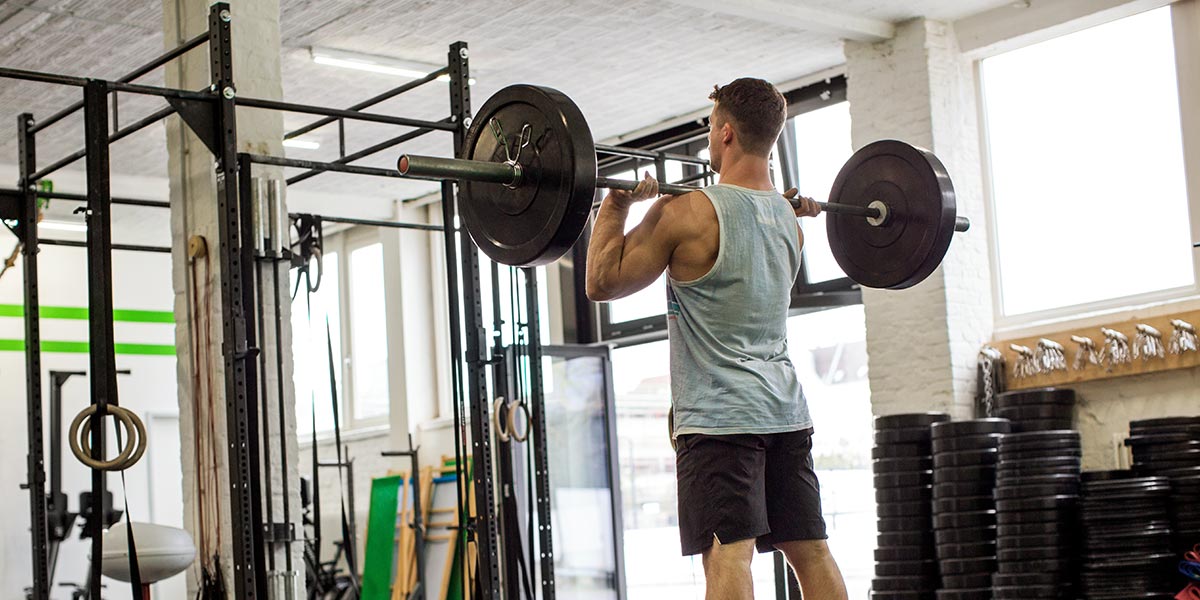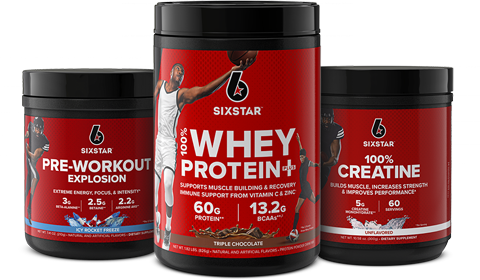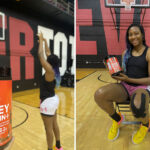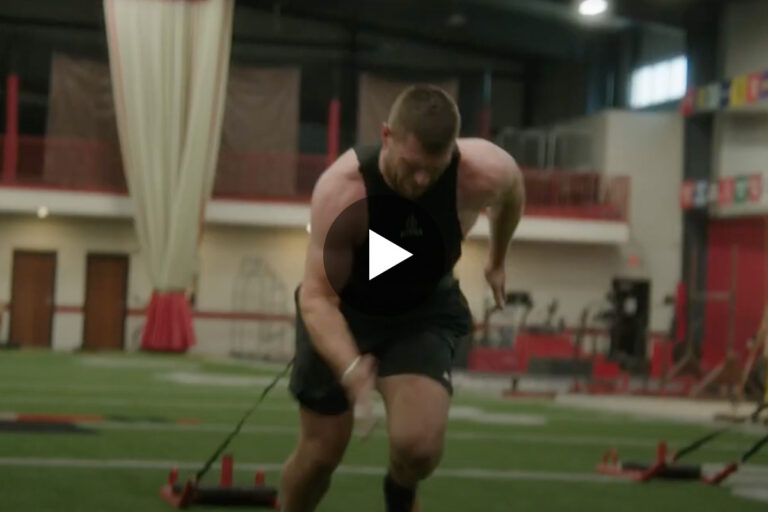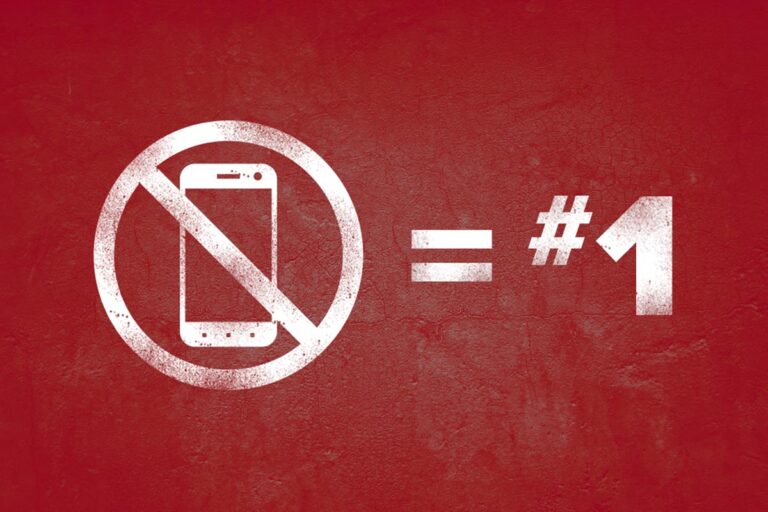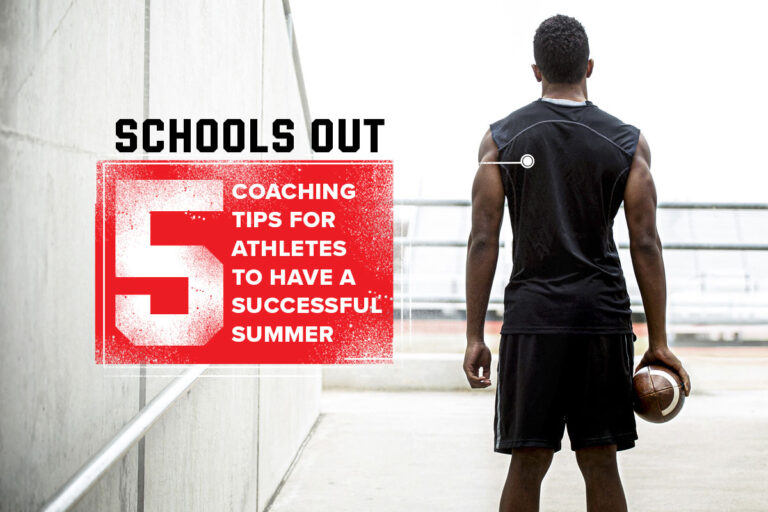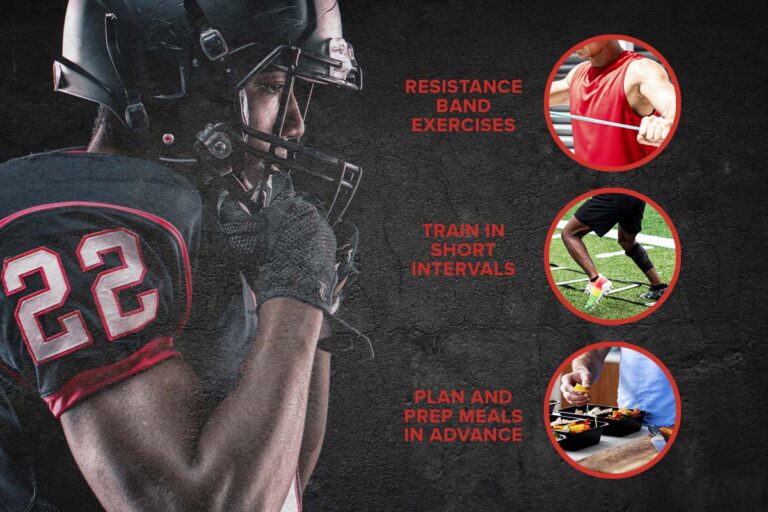The three key phases of a basketball training program are: off-season, in-season, and pre-season. Each phase plays a crucial role in a basketball player’s success during the season. What you do as part of your off-season training program will directly impact how you perform on the court during the season. The sooner you realize that training for basketball is a yearlong commitment, the better off you’ll be in the long run.
Pre-season training kicks off for high school and college basketball players at the start of the school year and continues up until formal basketball practices begin. Then in-season training occurs from the first day of practice until the final game of the basketball season. And post-season training goes from the end of the season through the final day of the school year.
Since we want to make sure that this is your best year on the court yet, we’ve put together a pre-season training program and a pre-season workout plan for basketball players who are dedicated and committed to taking their game to the next level.
Benefits Of Completing A Pre-Season Training Program For Basketball
The purpose of a pre-season training program is to prepare you for the upcoming season. Since basketball is a fast paced game in which you need to be able to run and up down the court, defend down low against opponents, and hustle for loose balls on the floor, the objectives for your pre-season basketball training program should be to improve your sport specific speed and conditioning, total body strength and power, and quickness and agility.
By completing a pre-season training program for basketball, you’ll feel a lot more confident heading into tryouts/the first few days of practices because you’ll know that you’ve already done the hard work necessary to prepare your body for the movements of the game such as jumping, landing, acceleration, and deceleration. Completing a pre-season training program will also reduce your chance of injury, stimulate muscle growth, and improve your overall fitness. By starting your season strong and healthy, you’ll be able to work on sport-specific skills and focus on other goals during the season, as well.
How To Design A Basketball Training Program & Workout Plan For The Pre-Season
Pre-season strength and conditioning programs focus on re-engaging and activating your muscles after the off-season. While the off-season is a critical time to rest, recuperate, and restore the imbalances that basketball places on your musculoskeletal system, you already know heading into the off-season that you will lose some of the fitness that you gained from the previous season, even if you do some light summer training. It’s simply part of the process and a necessary trade-off for recovery and mental refreshment. That said, before you dive into speed, skill, and power training, you need to focus on regaining full-body strength.
Your pre-season workout plan should pair plyometric exercises and strength exercises together in order to improve performance and durability, which are both crucial to a healthy and productive season. Plyometrics is a type of exercise training that uses speed and force of different movements to build muscle power. Plyometric training can include different types of exercises like push-ups, throwing, running, jumping, and kicking, which can all improve your physical performance. In fact, plyometrics or ‘jump training’ is one of the most effective methods for developing explosive power.
Pre-season strength training should also involve exercises that progressively increase muscle strength and hypertrophy. So, start with bodyweight exercises and then progress to loaded exercises. Continuing to increase weight while maintaining good form will build strength as muscle groups respond and adapt to the stimulus of lifting. During this progression, it’s extremely important to find the balance between adding weight to challenge yourself and maintaining proper technique throughout the exercises.
Tips To Warm Up Effectively Before Pre-Season Basketball Workouts
Before each pre-season training session, make sure to do a dynamic warm up that will gradually increase both your body temperature and kinesthetic awareness. A dynamic warm up will also prepare you for the rigors of your training session, lower the risk of injuries, and improve your overall athleticism – balance, joint mobility, body control, strength, agility, and flexibility.
Some effective dynamic stretches and warm up exercises for basketball players are high-knee skips, skipping backwards, carioca, Frankenstein (walking hamstring stretch), butt kicks, and the reverse lunge with twist and overhead reach.
High-Knee Skips: Skip in place by hopping on your right leg, while bringing your left knee up toward your chest. Engage your abs as your knee comes toward your chest. Then switch legs and continue skipping while pumping your arms.
Skipping Backwards: Skip while moving backwards with high knees. Make sure that you’re skipping with your arms and legs moving in opposition as you skip backwards to do this reverse skipping drill.
Carioca: At a skipping pace, move laterally to the left, crossing your right leg first in front and then behind your left leg. Swivel your hips and swing your arms. Then do the carioca drill again while moving laterally to your right.
Frankenstein (Walking Hamstring Stretch): Begin in a zombie position with your arms straight out in front of you. Aim to extend one leg straight out in front of you as high as you can, while bracing your abs to keep you upright. Tap your opposite hand to the top of your foot and then repeat on your other side. Keep your chest up and maintain a tall posture throughout this warm up drill that’s also known as the ‘Walking Hamstring Stretch’ or ‘Walking Toe Touch.’
Butt Kicks: Begin by standing with your feet about hip-distance apart and your arms at your side. Then slowly bring your right heel to your butt by contracting your hamstring muscle. Place the ball of your right foot back on the ground and then slowly bring your left heel to your butt. Perform this motion a few more times – alternating your heels and gradually building speed.
Reverse Lunge With Twist And Overhead Reach: Stand tall with your arms hanging at both sides. Step one foot backward while lowering your hips so that your front knee bends to 90-degrees and your back knee grazes the floor. At the same time, extend your hands toward the sky and rotate your torso toward your front leg. Then return to the starting position and repeat the movement.
Exercises To Incorporate Into Your Pre-Season Basketball Workout
During the pre-season, you should do strength training workouts around three times per week (resting at least 24-hours between sessions) and focus on building functional strength.
Strength & Power Conditioning Using Compound Movements
In the early pre-season, basketball players should focus on their strength and power conditioning and do workouts that include compound movements like squats, the bench press, and deadlifts.
Front Squat: Your power and explosiveness on the court comes from your core and legs. Front squats will help you enhance both your core strength and lower body strength. To do a front squat, place a barbell on the front of the squat rack at about chest height. Next, take the bar off the rack and hold it with your hands on the front of your shoulders (palms up). Stand with your feet about shoulder-width apart and slightly pointed outward. Bend at the knees, drop your butt downward until your legs make a 90-degree angle, and then stand back up. This completes one repetition.
Bench Press: Even though the bench press is used as part of the combine for rookies looking to become pros, the barbell bench press in basketball is somewhat controversial. That’s because benching incorrectly can alter your normal shooting form and reduce your shooting percentage. However, when performed correctly with the right antagonist exercises such as the T-Spine Bench Extension, Single-Arm Dumbbell Row, and Seated Cable Rope Face Pulls, the barbell bench press can actually extend your shooting range. And since the bench press involves pretty much every upper body muscle, it’s a great exercise to develop your upper body strength. To do a barbell bench press, lie flat on your back on a bench. Then grip the bar with your hands just wider than shoulder-width apart to allow for maximum force generation. Next, bring the bar slowly down to your chest as you breathe in. Push up as you breathe out, gripping the bar hard and watching a spot on the ceiling rather than the bar so you can ensure that it travels the same path every time.
Deadlifts: One of the best exercises for improving strength throughout your entire body, deadlifts work your posterior chain (hamstrings, glutes, and back), which are the muscles most responsible for speed and strength. Deadlifts also work your gripping muscles, your core, and quads. To do a deadlift, stand with your midfoot under the barbell. Then bend over and grab the bar with a shoulder-width grip. Next, bend your knees until your shins touch the bar. Lift your chest up and straighten your lower back. Take a big breath, hold it, and stand up with the weight. Hold the weight for a second at the top with locked hips and knees. Then return the weight to the floor by moving your hips while bending your legs. Rest for a second at the bottom and then repeat.
Unilateral Strength & Power Training
Basketball players should also do unilateral training, performing single arm and single leg exercises that are specific to the demands that will be placed on them during the season such as moving their bodies in multiple directions during a game. Unilateral leg work will also help you build blinding speed.
Single-Arm Dumbbell Row: The single-arm dumbbell row is a key back-building exercise for basketball players since dumbbell rows develop back strength and muscle hypertrophy. To do the single-arm dumbbell row, begin with your feet hip-distance apart, holding the dumbbell in one hand. Take one step back into a lunge position, while keeping a soft bend in your front leg with your knee in line with your ankle and your back leg straight. Lean slightly forward and rest your free hand on your front thigh. Tighten your core by squeezing your belly button in towards your spine. Next, lower the dumbbell toward the floor until you have a full extension at your elbow. Begin the upward motion of the dumbbell by first sliding your shoulder blade toward your spine and then lifting the weight up toward your torso by driving your elbow to the ceiling. Keep your elbow close to your body as it passes your ribs. Squeeze your shoulder blade in toward the center of your back. At the end of the movement, the dumbbell should be in line with your chest and your elbow should be pointing up toward the ceiling.
Dumbbell Single-Leg Romanian Deadlift: The Dumbbell Single-Leg Romanian Deadlift works the back of your legs (hamstrings and glutes) and hips. These muscles are powerful hip extensors and play a key role in running and jumping. To do the Dumbbell Single-Leg Romanian Deadlift, stand with your feet shoulder-width apart and your knees slightly bent. Raise one leg off the floor and flex your knee on the standing/support leg about 15% to 20% to activate your glutes. Without changing the bend in your knee, keep your back naturally arched, bend at your hips, and lower your torso until it’s almost parallel to the floor. Briefly pause at the bottom, squeeze your glutes, thrust your hips forward, and raise your torso back to the starting position.
Plyometric Training
When combined with a traditional strength and conditioning program, plyometric exercises will give you the tools you need to succeed on the court. As the season approaches, you’ll want to exchange some (or all) of your strength training sessions for plyometric training.
Box Jumps: Box jumps or front box jumps are one of the top plyometric drills for increasing your vertical leap. To do box jumps, stand in front of a high box or a plyo box. Then bend from your knees until you go down into a squat position. Swing your arms to gain momentum and jump up to the top of the plyo box. Try to land softly. Then step off the box and land back on the floor. Prepare yourself and then jump again. As you get more comfortable with box jumps, you can increase the height of the box or wear a weighted vest.
Squat Jumps: Squat jumps are another efficient and effective lower body plyometric exercise. To do squat jumps, stand with your feet shoulder-width apart and your trunk flexed forward slightly with your back straight in a neutral position. Your arms should be in the ‘ready’ position with your elbows flexed at approximately 90 degrees. Next, lower your body so your thighs are parallel to the ground. Then immediately explode upwards vertically and drive your arms up. (Don’t hold a squat position before jumping up. Keep the time between dipping down and jumping up to a minimum.) Land on both feet, rest for one to two seconds, and then repeat. Prior to takeoff, extend your ankles to their maximum range to ensure proper mechanics.
Tips For Completing A Pre-Season Training Program For Basketball
Speed & Agility: Your basketball training program should place more emphasis on quickness and agility as the season gets closer. You can do these agility-training exercises, which will help you accelerate in a target direction as fast as possible.
Hand-Eye Coordination: Hand-eye coordination refers to the control required to match the movement of your hands with what your eyes see. Passing, dribbling, shooting, and catching the basketball all require outstanding hand-eye coordination. These four easy drills will help you improve your hand-eye coordination.
Nutrition: Nutrition can make or break your performance. Keeping a regular meal schedule during pre-season training is very important because long, intense workouts with changes in calories may lead to fatigue and possible injury. To prevent injury, basketball players should eat at least every four hours when training and make sure that they’re hydrating properly during every workout.
